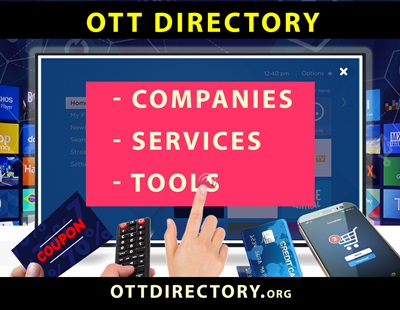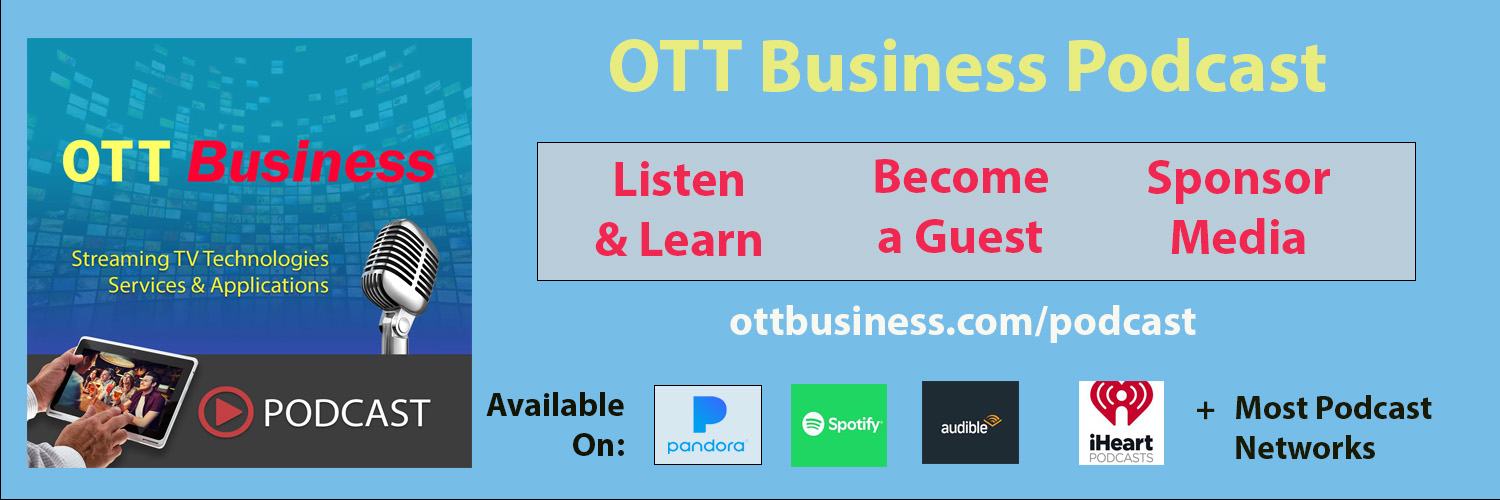Cloud Media Storage Platforms
 Cloud media storage platforms for OTT and streaming TV systems address the challenge of managing vast amounts of video content efficiently and securely. Shockingly, these platforms can reduce latency by up to 50%, drastically improving viewer experience. They solve key problems such as optimizing content delivery through CDN integration, automating workflows, and providing robust security measures. Learning more about these platforms is essential for anyone looking to enhance content management, reduce costs, and ensure high availability and reliability in their streaming services.
Cloud media storage platforms for OTT and streaming TV systems address the challenge of managing vast amounts of video content efficiently and securely. Shockingly, these platforms can reduce latency by up to 50%, drastically improving viewer experience. They solve key problems such as optimizing content delivery through CDN integration, automating workflows, and providing robust security measures. Learning more about these platforms is essential for anyone looking to enhance content management, reduce costs, and ensure high availability and reliability in their streaming services.
Cloud Media Storage Platforms
- Akamai Technologies – Akamai provides cloud storage and media delivery solutions that enhance streaming performance and security for OTT services.
- Alibaba Cloud – Alibaba Cloud provides scalable cloud storage and media processing services, focusing on high performance and global reach.
- Amazon Web Services (AWS) – Amazon Web Services offers a comprehensive suite of cloud services, including storage, compute, and media services, designed for scalable and reliable media delivery.
- Archiware – Archiware provides data and media asset management solutions specializing in backup, synchronization, and archiving for the OTT and Streaming TV industry.
- Axle.ai – Axle.ai provides AI-powered media asset management solutions that enable media producers and service providers to organize, search, and collaborate on video content efficiently across multiple platforms.
- Backblaze – Backblaze provides cost-effective cloud storage services, supporting easy media file uploads, management, and distribution.
- Beeyou TV – provides an OTT and Streaming TV services easy to use platform that can manage, monetize, and deliver video content across multiple devices and platforms.
- Cloudinary – Cloudinary offers media management solutions that streamline the upload, storage, and delivery of video content for OTT services.
- CloudSigma – CloudSigma offers flexible and high-performance cloud storage solutions suitable for handling media content for OTT platforms.
- DigitalOcean – DigitalOcean provides simple and scalable cloud storage and compute solutions, ideal for media management and streaming services.
- Dropbox – Dropbox provides cloud storage and collaboration tools, with solutions tailored for media management and distribution.
- Fastly – Fastly offers edge cloud platform services, including media storage and delivery, to optimize streaming quality and performance.
- Google Cloud Platform – Google Cloud Platform provides robust cloud storage and media solutions, leveraging advanced AI and machine learning for enhanced media management and delivery.
- Hewlett Packard Enterprise (HPE) – HPE offers a range of cloud storage solutions, including scalable and secure options for managing and distributing media content.
- IBM Aspera – IBM Aspera provides high-speed data transfer and cloud storage solutions, optimizing media workflows for streaming and OTT platforms.
- IBM Cloud – IBM Cloud delivers scalable cloud storage and media processing services, integrating AI to optimize media workflows and distribution.
- Iomovo – IoMoVo provides an automated cloud-based media management and workflow platform for OTT and Streaming TV service providers.
- iDrive – iDrive offers cloud storage and backup services with advanced features like continuous data protection and file versioning.
- Infrascale – Infrascale provides disaster recovery and cloud backup solutions that ensure data protection and quick recovery for media content.Inorain – Inorain provides advanced OTT and Streaming TV solutions that include a full range of services such as live streaming, video-on-demand, and multi-platform delivery.
- Linode – Linode provides cloud storage and compute services with a focus on simplicity and performance, suitable for media storage and streaming needs.
- LucidLink – LucidLink provides cloud-native storage solutions that enable high-performance remote collaboration for OTT and Streaming TV industry professionals.
-
Microsoft Azure – Microsoft Azure offers a range of cloud services, including media services and storage solutions, tailored for OTT and streaming TV providers.
- OpenText – OpenText provides enterprise information management solutions, including cloud storage for secure and scalable media content management.
- Oracle Cloud Infrastructure – Oracle Cloud Infrastructure offers high-performance cloud storage and media services designed to meet the needs of OTT and streaming TV platforms.
- OVHcloud – OVHcloud offers a variety of cloud services, including storage and media solutions, designed to support OTT and streaming platforms.
- Panzura – Panzura provides cloud file services that enable global collab
Cloud Media Storage Key Features and Capabilities
Analytics and Reporting
Analytics and reporting tools provide detailed insights into storage usage, performance metrics, and viewer engagement. This feature is important because it helps service providers make informed decisions about content management and optimization.
API and Integration Support
Comprehensive API access and support for integration with various content management systems, media processing tools, and other third-party services are essential. This feature is important because it enables seamless interoperability and customization of the storage platform to fit specific workflows.
Automatic Identifying and Metadata Tagging
Automatic identifying and metadata tagging systems can recognize video content and tag it with relevant metadata. This feature is crucial because it enhances the searchability and organization of content, making it easier to manage and retrieve.
Content Delivery Network (CDN) Integration
Integration with CDNs ensures fast and reliable delivery of content to viewers worldwide. This feature is important because it optimizes the viewing experience by reducing buffering and latency.
Content Management and Workflow Automation
Tools for content management and workflow automation, including transcoding, encoding, and distribution, streamline operations. This feature is important because it improves efficiency and reduces the time required to prepare and deliver content.
Cost Efficiency
Transparent and competitive pricing models, including pay-as-you-go or reserved capacity options, help optimize budget management. This feature is important because it allows service providers to manage costs effectively and scale resources according to demand.
Customer Support and Service Level Agreements (SLAs)
Responsive customer support and clear SLAs ensure reliable service and quick resolution of issues. This feature is important because it provides assurance that any problems will be promptly addressed, minimizing downtime.
Global Reach
A global infrastructure to store and deliver content closer to end-users reduces latency and improves performance. This feature is important because it enhances the viewing experience for a geographically diverse audience.
High Availability and Reliability
Guaranteeing minimal downtime and high data availability ensures uninterrupted access to content. This feature is important because consistent access to content is critical for maintaining viewer satisfaction and trust.
Live and Rapid Storage Transfers
Live and rapid storage transfers enable quick and efficient uploading and transferring of video content to the cloud. This feature is crucial for live streaming and ensuring timely content updates, which are essential for real-time broadcasting.
Performance and Latency Optimization
Optimizing storage performance and reducing latency ensures faster access and delivery of high-quality video content. This feature is important because it directly impacts the viewing experience, making it smoother and more enjoyable.
Redundancy and Disaster Recovery
Data redundancy and disaster recovery options protect against data loss. This feature is critical because it ensures content is always recoverable in case of hardware failure or other unforeseen events.
Scalability
The ability to easily scale storage capacity up or down based on demand provides cost-effectiveness and flexibility. This feature is important because it allows service providers to adjust resources as needed without overcommitting to fixed storage limits.
Security and Compliance
Robust security features such as encryption, access controls, and compliance with industry regulations protect sensitive content. This feature is important because it ensures that content is secure from unauthorized access and meets legal and regulatory standards.
User and Permission Management
User and permission management tools control access and ensure that only authorized personnel can manage and distribute content. This feature is important because it maintains the integrity and security of the content management system.
Cloud Media Storage Glossary
- Content Delivery Network (CDN) – A distributed network of servers that delivers content to users based on their geographical location, ensuring faster delivery and reduced latency.
- Continuous Data Protection (CDP) – An approach to data backup that allows for near-continuous data protection, minimizing data loss.
- Data Encryption – The process of converting data into a form that cannot be easily understood by unauthorized users, ensuring data security during storage and transmission.
- Disaster Recovery (DR) – The process and procedures to recover and protect data and IT infrastructure in the event of a disaster, ensuring business continuity.
- High Availability (HA) – Ensures that services remain operational and accessible with minimal downtime, usually achieved through redundancy and failover mechanisms.
- Multi-Region Replication – Replicating data across multiple geographical regions to ensure data availability and resilience in case of regional outages.
- Multi-Tenancy – The ability of a cloud storage system to securely manage and isolate data from multiple users or tenants within the same infrastructure.
- Object Storage – A data storage architecture that manages data as objects, each containing the data itself along with metadata and a unique identifier.
- Scalability – The capability of a cloud storage system to handle increasing amounts of data and traffic without impacting performance.
- Secure Socket Layer (SSL) / Transport Layer Security (TLS) – Protocols that ensure secure communication over a computer network, commonly used to secure data in transit.
- Single Sign-On (SSO) – A session and user authentication service that permits a user to use one set of login credentials to access multiple applications.
- Versioning – Managing multiple iterations of data or files, allowing users to retrieve previous versions, essential for media files undergoing edits or updates.

